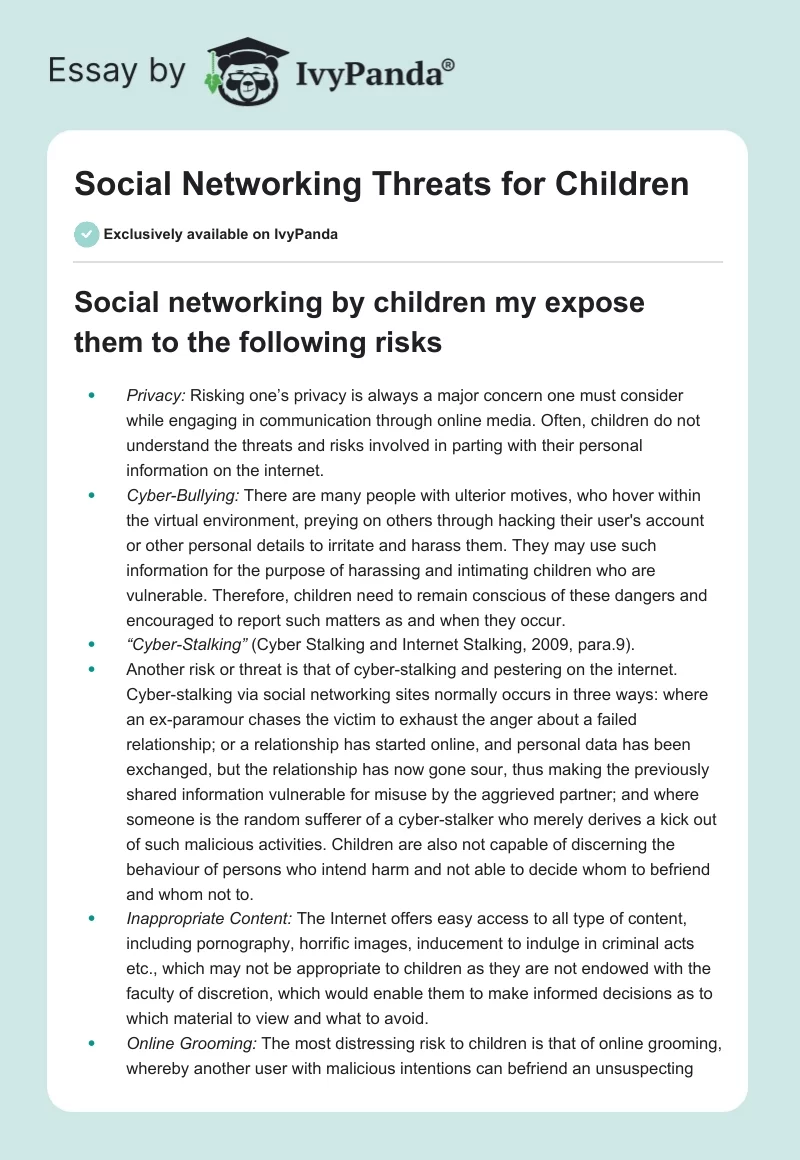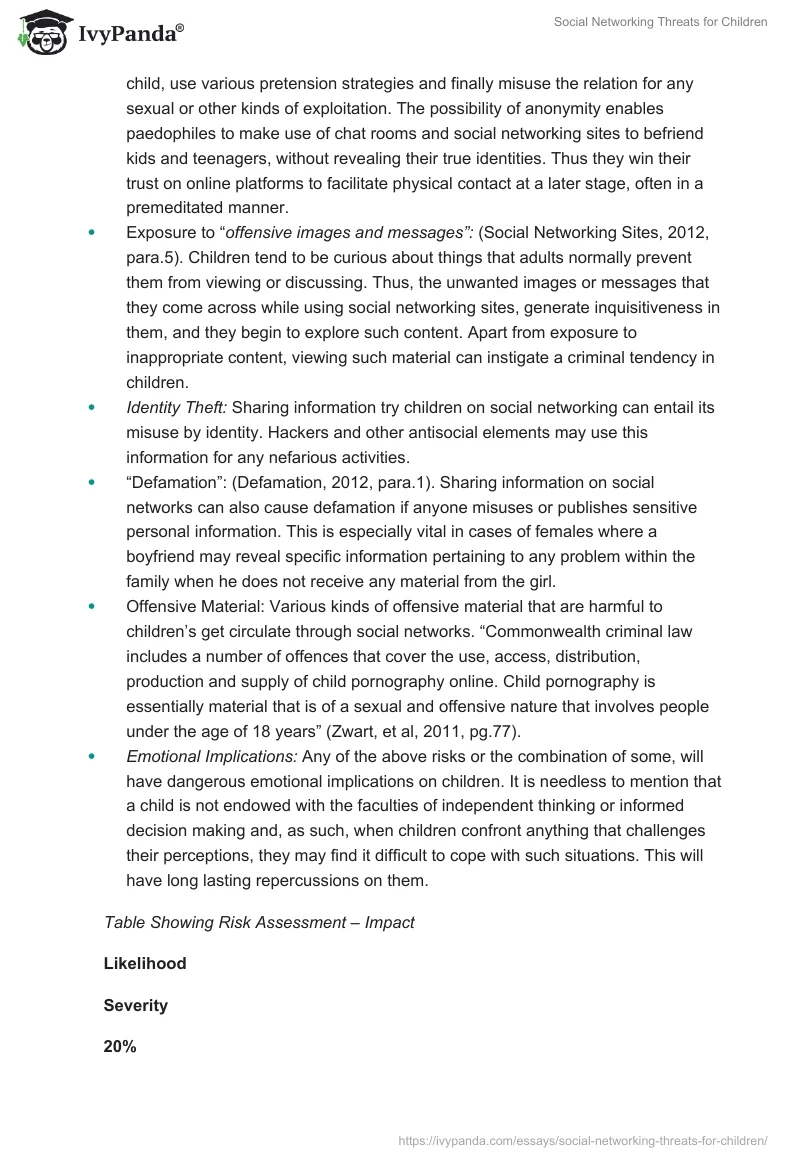Social networking by children my expose them to the following risks
- Privacy: Risking one’s privacy is always a major concern one must consider while engaging in communication through online media. Often, children do not understand the threats and risks involved in parting with their personal information on the internet.
- Cyber-Bullying: There are many people with ulterior motives, who hover within the virtual environment, preying on others through hacking their user’s account or other personal details to irritate and harass them. They may use such information for the purpose of harassing and intimating children who are vulnerable. Therefore, children need to remain conscious of these dangers and encouraged to report such matters as and when they occur.
- “Cyber-Stalking” (Cyber Stalking and Internet Stalking, 2009, para.9).
- Another risk or threat is that of cyber-stalking and pestering on the internet. Cyber-stalking via social networking sites normally occurs in three ways: where an ex-paramour chases the victim to exhaust the anger about a failed relationship; or a relationship has started online, and personal data has been exchanged, but the relationship has now gone sour, thus making the previously shared information vulnerable for misuse by the aggrieved partner; and where someone is the random sufferer of a cyber-stalker who merely derives a kick out of such malicious activities. Children are also not capable of discerning the behaviour of persons who intend harm and not able to decide whom to befriend and whom not to.
- Inappropriate Content: The Internet offers easy access to all type of content, including pornography, horrific images, inducement to indulge in criminal acts etc., which may not be appropriate to children as they are not endowed with the faculty of discretion, which would enable them to make informed decisions as to which material to view and what to avoid.
- Online Grooming: The most distressing risk to children is that of online grooming, whereby another user with malicious intentions can befriend an unsuspecting child, use various pretension strategies and finally misuse the relation for any sexual or other kinds of exploitation. The possibility of anonymity enables paedophiles to make use of chat rooms and social networking sites to befriend kids and teenagers, without revealing their true identities. Thus they win their trust on online platforms to facilitate physical contact at a later stage, often in a premeditated manner.
- Exposure to “offensive images and messages”: (Social Networking Sites, 2012, para.5). Children tend to be curious about things that adults normally prevent them from viewing or discussing. Thus, the unwanted images or messages that they come across while using social networking sites, generate inquisitiveness in them, and they begin to explore such content. Apart from exposure to inappropriate content, viewing such material can instigate a criminal tendency in children.
- Identity Theft: Sharing information try children on social networking can entail its misuse by identity. Hackers and other antisocial elements may use this information for any nefarious activities.
- “Defamation”: (Defamation, 2012, para.1). Sharing information on social networks can also cause defamation if anyone misuses or publishes sensitive personal information. This is especially vital in cases of females where a boyfriend may reveal specific information pertaining to any problem within the family when he does not receive any material from the girl.
- Offensive Material: Various kinds of offensive material that are harmful to children’s get circulate through social networks. “Commonwealth criminal law includes a number of offences that cover the use, access, distribution, production and supply of child pornography online. Child pornography is essentially material that is of a sexual and offensive nature that involves people under the age of 18 years” (Zwart, et al, 2011, pg.77).
- Emotional Implications: Any of the above risks or the combination of some, will have dangerous emotional implications on children. It is needless to mention that a child is not endowed with the faculties of independent thinking or informed decision making and, as such, when children confront anything that challenges their perceptions, they may find it difficult to cope with such situations. This will have long lasting repercussions on them.
Table Showing Risk Assessment – Impact
Conclusion
Children need to be made aware of the dangers as well as security systems while using social networking sites. They should also be given a clear idea about what is permitted and what should be strictly avoided. By keeping the security systems up to date and through establishing strict web filters and password systems the threats can be contained to a great extent. Moreover, parents and teachers should properly monitor the activity of children online in order to make sure that they keep a safe distance from activities that may be risky.
Reference List
Cyber Stalking and Internet Stalking. (2009). Safety Web. Web.
Defamation. (2012). Govett Quilliam the Lawyers. Web.
Social Networking Sites. (2012). Direct Government. Web.
Zwart, M.D. et al (2011). Teenagers, Legal Risks and Social Networking Sites. Monash University. Web.


